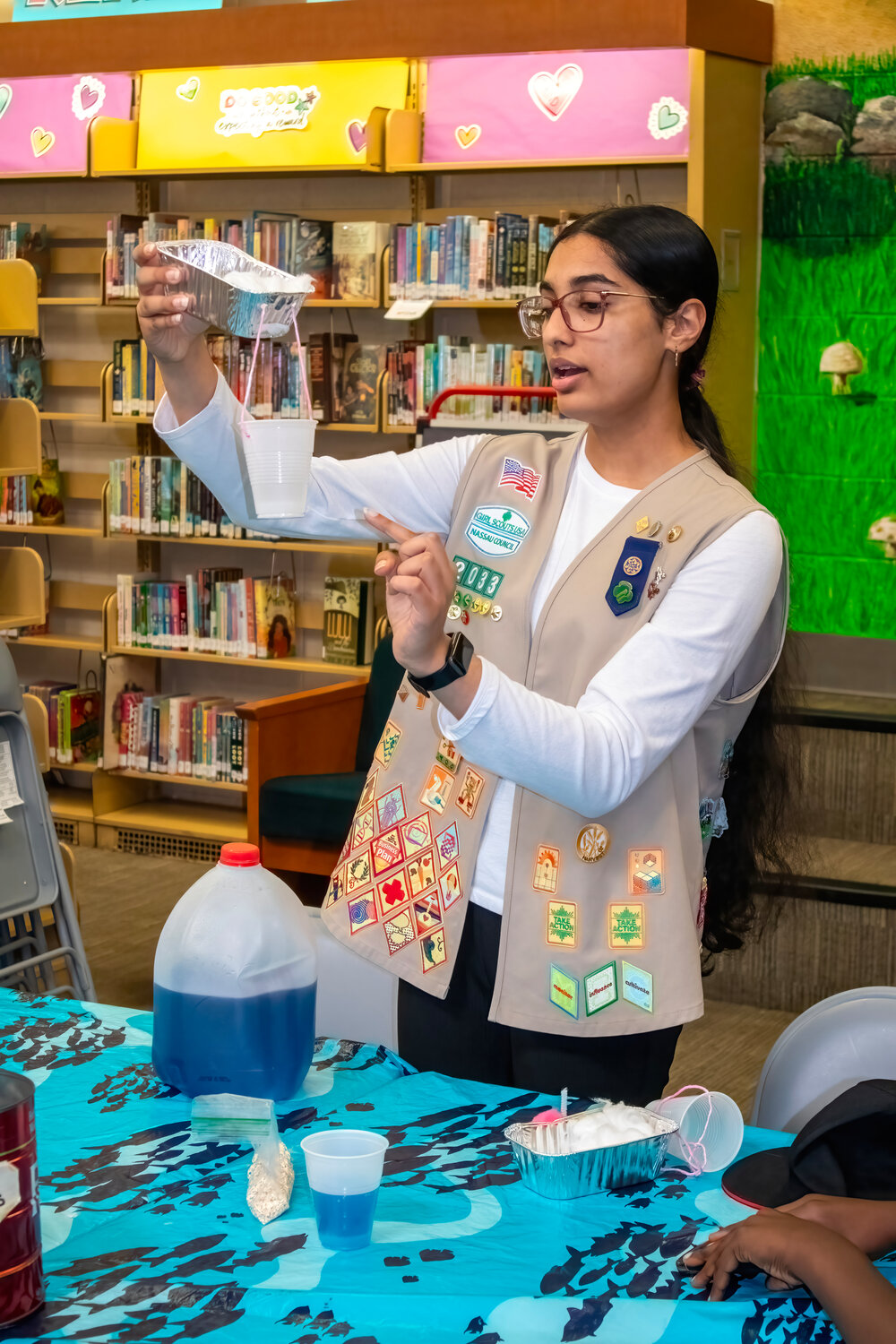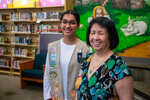This Nassau County Girl Scout’s answer to L.I.’s water pollution: rain gardens
Nine-year-old Yusuf Dungas, alongside five other kids, eagerly sat down to a crafts project at the Waldinger Memorial Library’s Children’s Room. At their fingertips were pipe cleaners, cotton balls, pom-poms, and an aluminum loaf: the raw materials for constructing a model rain garden.
Walking them through each step of the project was Nassau County Girl Scout Asha Gajraj, from Troop 2033.
Gajraj was capping off the last of six presentations over the past few weeks at the library, divided evenly between children and teens/adults, turning a colorful crafts project into a deeper lesson on the importance of water quality preservation. Her 80-hour community service project, known as the Gold Award Project, made the magic of the rain garden come alive.
You might see rain gardens figuring prominently in sloping landscaped yards,often casually mistaken for your run-of-the-mill flower garden. But what distinguishes these shrubs of native plants, often grown in a shallow basin of dirt, are the extensive environmental benefits they offer.
During a downpour, stormwater runoff that would otherwise work its way into neighboring storm drains pools around the rain garden, letting the water slowly reintroduce itself into the soil. As this happens, the plants “act like an environmental sponge,” noted Gajraj, soaking up excess chemicals and nutrients that are good for the plant but damaging to our ecosystem if left unfiltered.
To simulate the concept, she poured blue-dyed water with oats, symbolizing the polluted water with spotted debris, into the empty half of an aluminum loaf as it seeped into the other half containing the “rain garden” —with a soil bed of cotton balls and flowery decorations made of pipe cleaners and pom-poms. Gajraj kept pouring on the liquid until the excess water escaped through a hole, coming out clearer on the other end.
There’s one main culprit in Long Island’s water pollutant problem Gajraj wanted to spotlight in her presentation: excess nitrates. Commonly found in nitrogen-based fertilizers and sewage, the costly and unrestrained accumulation of nitrates within local waterways has vexed Long Island ecologists and lawmakers alike. “This has been a decades-long problem in the making,” Gajraj said.
Too many nitrates can cause eutrophication in the ocean and bays, which can lead to an explosive growth of harmful algae blooms— secreting toxins that kill marine life and choke them of oxygen as the algae decompose, creating dead zones.
It’s the expansion of these dead zones in recent years that has dealt an enormous blow to major fisheries on Long Island — from the loss of bay scallops to scores of dead fish and clams washing ashore— and the economy incumbent upon them.
“Speaking to one of the girls in my troop who works specifically in waterways on Long Island, tells me how when she goes to beach cleanups, how filthy the water is from the sewage and agricultural runoff,” said Gajraj. The quality of the local drinking water source is also at risk “as the nitrates go down into our groundwater and get into our aquifers which we’re heavily reliant on.”
Lawmakers have been in the thick of curbing these trends through expensive interventions like sewage treatments and updating languishing septic systems to improve water quality. Yet Gajraj argues not to discount the need for personal responsibility in reducing our individual contamination footprint: from being more mindful of how much fertilizer is really needed for yards to dipping one’s toes in some conservation landscaping like rain gardening for one’s next home project.
“I think wherever you live, you have a responsibility as a person to care for the air and water you take in,” said Gajraj. “By doing a few little extra steps, few little extra things that really make a difference in the long run.”
She was pleasantly surprised by the turnout for her presentations and hoped she left her audiences not only more informed about “what is actually in their water but also more informed about how to prevent it from harming their lifestyle so we can continue having a beautiful, safe, and clean Long Island.”
Have an opinion on this article? Send an email to jlasso@liherald.com

 43.0°,
Partly Cloudy
43.0°,
Partly Cloudy 







